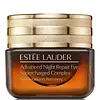What's inside
What's inside
 Key Ingredients
Key Ingredients

 Benefits
Benefits

 Concerns
Concerns

 Ingredients Side-by-side
Ingredients Side-by-side

Methyl Trimethicone
Skin ConditioningWater
Skin ConditioningBifida Ferment Lysate
Skin ConditioningDimethicone
EmollientDimethicone/Vinyl Dimethicone Crosspolymer
Skin ConditioningPropanediol
SolventSucrose
HumectantPetrolatum
EmollientPolysorbate 40
EmulsifyingTrehalose
HumectantAlgae Extract
EmollientMorus Bombycis Root Extract
Skin ConditioningScutellaria Baicalensis Root Extract
AstringentLactobacillus Ferment
Skin ConditioningTriticum Vulgare Germ Extract
Skin ConditioningAcrylamide/Sodium Acryloyldimethyltaurate Copolymer
Emulsion StabilisingBetula Alba Bud Extract
Skin ConditioningHydrolyzed Algin
Poria Cocos Sclerotium Extract
AstringentJojoba Alcohol
EmollientEthylhexylglycerin
Skin ConditioningGlycine Soja Seed Extract
Skin ConditioningIsopropyl Jojobate
EmollientJojoba Esters
EmollientIsohexadecane
EmollientYeast Extract
Skin ConditioningHydrogenated Lecithin
EmulsifyingHordeum Vulgare Extract
EmollientPEG/PPG-18/18 Dimethicone
EmulsifyingCholesterol
EmollientAnthemis Nobilis Flower Extract
MaskingTocopheryl Acetate
AntioxidantSodium Rna
Skin ConditioningCaffeine
Skin ConditioningPolysorbate 80
EmulsifyingCaprylyl Glycol
EmollientPhytosphingosine
Skin ConditioningSqualane
EmollientPotassium Sulfate
Sodium Hyaluronate
HumectantAcrylates/C10-30 Alkyl Acrylate Crosspolymer
Emulsion StabilisingTripeptide-32
Skin ConditioningButylene Glycol
HumectantTromethamine
BufferingDisodium EDTA
BHT
AntioxidantPhenoxyethanol
PreservativeIron Oxides
Methyl Trimethicone, Water, Bifida Ferment Lysate, Dimethicone, Dimethicone/Vinyl Dimethicone Crosspolymer, Propanediol, Sucrose, Petrolatum, Polysorbate 40, Trehalose, Algae Extract, Morus Bombycis Root Extract, Scutellaria Baicalensis Root Extract, Lactobacillus Ferment, Triticum Vulgare Germ Extract, Acrylamide/Sodium Acryloyldimethyltaurate Copolymer, Betula Alba Bud Extract, Hydrolyzed Algin, Poria Cocos Sclerotium Extract, Jojoba Alcohol, Ethylhexylglycerin, Glycine Soja Seed Extract, Isopropyl Jojobate, Jojoba Esters, Isohexadecane, Yeast Extract, Hydrogenated Lecithin, Hordeum Vulgare Extract, PEG/PPG-18/18 Dimethicone, Cholesterol, Anthemis Nobilis Flower Extract, Tocopheryl Acetate, Sodium Rna, Caffeine, Polysorbate 80, Caprylyl Glycol, Phytosphingosine, Squalane, Potassium Sulfate, Sodium Hyaluronate, Acrylates/C10-30 Alkyl Acrylate Crosspolymer, Tripeptide-32, Butylene Glycol, Tromethamine, Disodium EDTA, BHT, Phenoxyethanol, Iron Oxides
Water
Skin ConditioningGlycerin
HumectantCyclohexasiloxane
EmollientButylene Glycol
HumectantAlcohol Denat.
AntimicrobialButyrospermum Parkii Butter
Skin ConditioningStearic Acid
CleansingStearyl Alcohol
EmollientCetyl Alcohol
EmollientPalmitic Acid
EmollientPEG-100 Stearate
Glyceryl Stearate
EmollientCera Alba
EmollientSodium Stearoyl Glutamate
CleansingOctyldodecanol
EmollientCI 77891
Cosmetic ColorantCI 19140
Cosmetic ColorantCI 16035
Cosmetic ColorantZea Mays Oil
EmulsifyingMica
Cosmetic ColorantTocopheryl Acetate
AntioxidantEscin
TonicTocopherol
AntioxidantAscorbyl Palmitate
AntioxidantHydroxypropyl Tetrahydropyrantriol
Skin ConditioningHydrolyzed Linseed Extract
Skin ConditioningSodium Benzoate
MaskingPhenoxyethanol
PreservativeAdenosine
Skin ConditioningPEG-20 Stearate
EmulsifyingTrisodium Ethylenediamine Disuccinate
Polysorbate 80
EmulsifyingChlorhexidine Digluconate
AntimicrobialPanthenol
Skin ConditioningPentaerythrityl Tetra-Di-T-Butyl Hydroxyhydrocinnamate
AntioxidantTin Oxide
AbrasivePropanediol
SolventPropylene Glycol
HumectantIsohexadecane
EmollientCapryloyl Salicylic Acid
ExfoliatingAcrylamide/Sodium Acryloyldimethyltaurate Copolymer
Emulsion StabilisingMyristic Acid
CleansingSorbitan Oleate
EmulsifyingGeraniol
PerfumingPassiflora Edulis Seed Oil
EmollientRose Extract
Skin ConditioningRosa Damascena Flower Oil
MaskingRosa Centifolia Flower Extract
AstringentTetrasodium Glutamate Diacetate
Citronellol
PerfumingCitric Acid
BufferingPrunus Armeniaca Kernel Oil
MaskingOryza Sativa Bran Oil
EmollientParfum
MaskingWater, Glycerin, Cyclohexasiloxane, Butylene Glycol, Alcohol Denat., Butyrospermum Parkii Butter, Stearic Acid, Stearyl Alcohol, Cetyl Alcohol, Palmitic Acid, PEG-100 Stearate, Glyceryl Stearate, Cera Alba, Sodium Stearoyl Glutamate, Octyldodecanol, CI 77891, CI 19140, CI 16035, Zea Mays Oil, Mica, Tocopheryl Acetate, Escin, Tocopherol, Ascorbyl Palmitate, Hydroxypropyl Tetrahydropyrantriol, Hydrolyzed Linseed Extract, Sodium Benzoate, Phenoxyethanol, Adenosine, PEG-20 Stearate, Trisodium Ethylenediamine Disuccinate, Polysorbate 80, Chlorhexidine Digluconate, Panthenol, Pentaerythrityl Tetra-Di-T-Butyl Hydroxyhydrocinnamate, Tin Oxide, Propanediol, Propylene Glycol, Isohexadecane, Capryloyl Salicylic Acid, Acrylamide/Sodium Acryloyldimethyltaurate Copolymer, Myristic Acid, Sorbitan Oleate, Geraniol, Passiflora Edulis Seed Oil, Rose Extract, Rosa Damascena Flower Oil, Rosa Centifolia Flower Extract, Tetrasodium Glutamate Diacetate, Citronellol, Citric Acid, Prunus Armeniaca Kernel Oil, Oryza Sativa Bran Oil, Parfum
 Reviews
Reviews

Alternatives
Ingredients Explained
These ingredients are found in both products.
Ingredients higher up in an ingredient list are typically present in a larger amount.
We don't have a description for Acrylamide/Sodium Acryloyldimethyltaurate Copolymer yet.
Butylene Glycol (or BG) is used within cosmetic products for a few different reasons:
Overall, Butylene Glycol is a safe and well-rounded ingredient that works well with other ingredients.
Though this ingredient works well with most skin types, some people with sensitive skin may experience a reaction such as allergic rashes, closed comedones, or itchiness.
Learn more about Butylene GlycolIsohexadecane is added to enhance texture, emulsify, and to help cleanse. It is an isoparrafin. It is a component of petrolatum.
Due to its large size, Isohexadecane is not absorbed by the skin. Instead, it sits on top and acts as an emollient. Emollients help keep your skin soft and smooth by trapping moisture within.
Isohexadecane is often used in products designed to help oily skin. It is lightweight and non-greasy while helping to moisturize. When mixed with silicones, it gives a product a silky feel.
Learn more about IsohexadecanePhenoxyethanol is a preservative that has germicide, antimicrobial, and aromatic properties. Studies show that phenoxyethanol can prevent microbial growth. By itself, it has a scent that is similar to that of a rose.
It's often used in formulations along with Caprylyl Glycol to preserve the shelf life of products.
Polysorbate 80 is a surfactant and emulsifier. It is used to keep ingredients together, and prevent oils and waters from separating.
It is made from polyethoxylated sorbitan and oleic acid. This ingredient can be found in cosmetics, foods, and medicine. It is water-soluble.
Polysorbate 80 may not be fungal acne safe.
Learn more about Polysorbate 80Propanediol is an all-star ingredient. It softens, hydrates, and smooths the skin.
It’s often used to:
Propanediol is not likely to cause sensitivity and considered safe to use. It is derived from corn or petroleum with a clear color and no scent.
Learn more about PropanediolTocopheryl Acetate is AKA Vitamin E. It is an antioxidant and protects your skin from free radicals. Free radicals damage the skin by breaking down collagen.
One study found using Tocopheryl Acetate with Vitamin C decreased the number of sunburned cells.
Tocopheryl Acetate is commonly found in both skincare and dietary supplements.
Learn more about Tocopheryl AcetateWater. It's the most common cosmetic ingredient of all. You'll usually see it at the top of ingredient lists, meaning that it makes up the largest part of the product.
So why is it so popular? Water most often acts as a solvent - this means that it helps dissolve other ingredients into the formulation.
You'll also recognize water as that liquid we all need to stay alive. If you see this, drink a glass of water. Stay hydrated!
Learn more about Water